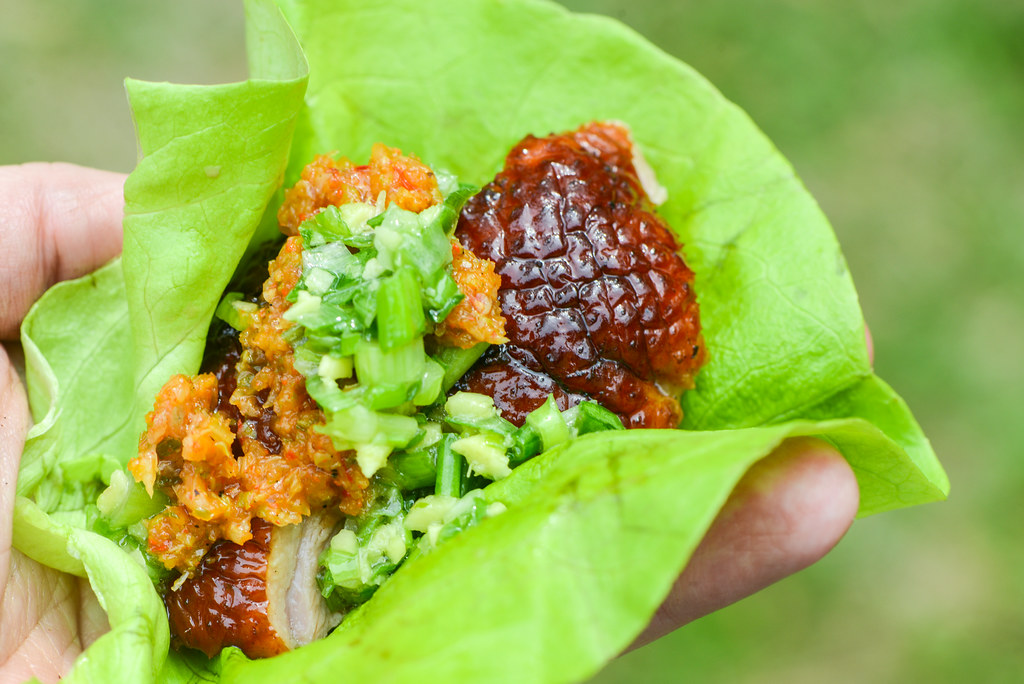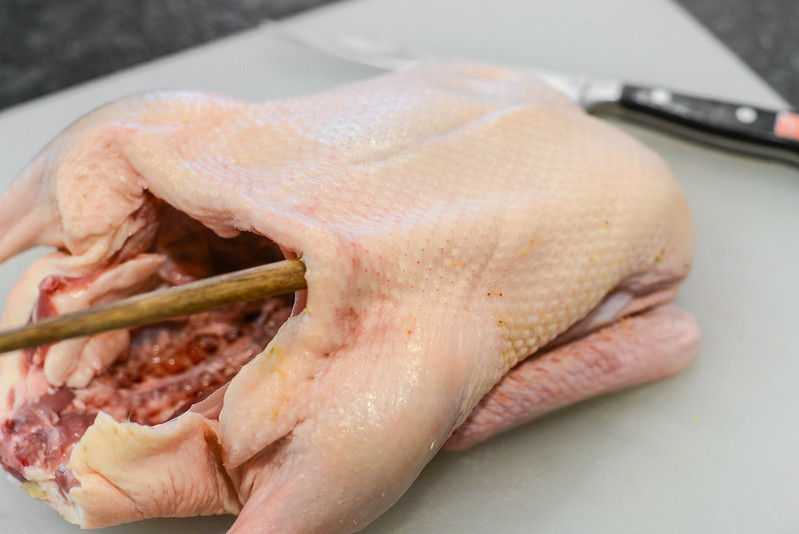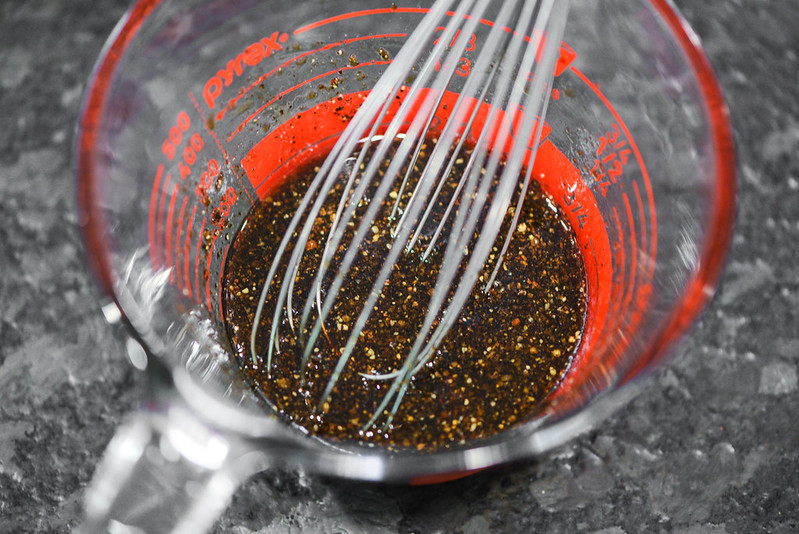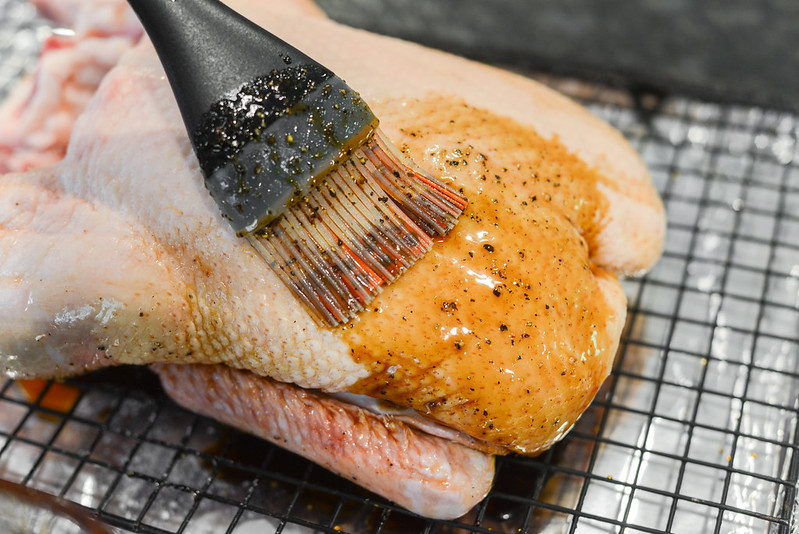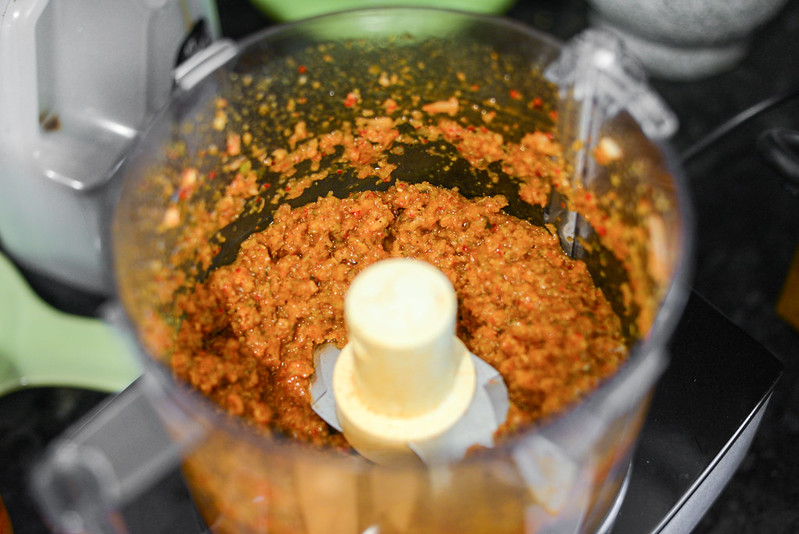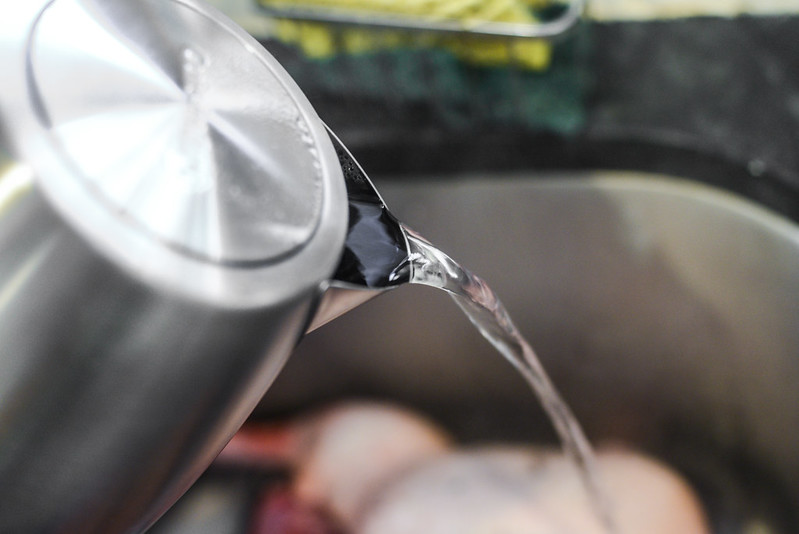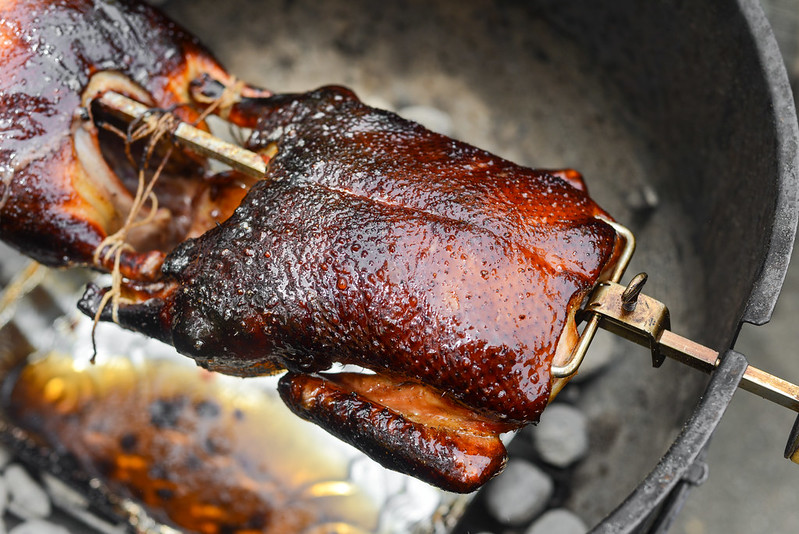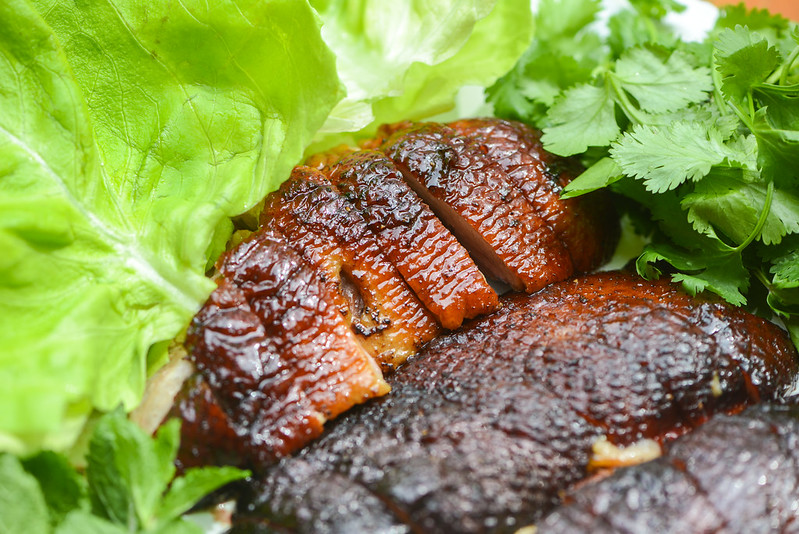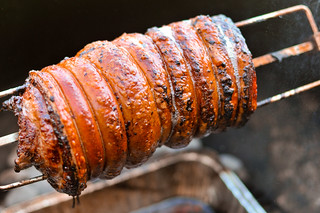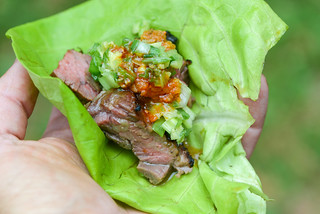Smoked Duck Ssam
I'm not really sure why I don't cook duck more often. In many ways, it reigns supreme over other poultry—it's definitely more flavorful and fattier than your chicken and turkey mainstays, which are huge plusses in my book. I guess the fact that it's not normally out with the standard birds, tucked away often in the freezer section, makes it kind of out of sight and out of mind. When I was considering making ssams—essentially Korean lettuce wraps—for a Meawave recently, duck did jump right up there as a great idea for a meat filling, and I'm glad it did because this smoked duck ssam was really amazing.
Duck came to the forefront of my mind because I'm familiar with the duck ssam served at Momofuku Ssam Bar. While recipes for their version exist out there on the interwebs, I decided to make own recipe that was based off the process I learned when cooking peking duck. This began with separating the skin/fat from the breast meat, using the end of a wooden spoon to reach the areas my fingers couldn't.
For peking duck, the next step was coating the birds with a maltose-soy mixture, and I decided to use something similar here, just altered a little to have a bit more of a Korean flavor profile. For this slather, I used honey, soy sauce, sesame oil, and black pepper.
After brushing on the sauce, I coated the entire duck with a salt and baking powder mixture. This not only helps with seasoning, but the baking powder is a nice little trick to help get a crispier skin that browns better.
Then the ever important air-drying step took place in my fridge—I still can't bring myself to dry out a duck for days outside of a refrigerator. At a minimum, you likely will need 12 hours of resting for the skin to become dry and leathery, which is important for getting a good crispness while cooking, but I've found at least a full 24 hours is best.
When the drying part was almost finished, and I was going to be cooking soon, I made the two sauces for the ssam. These both did come directly from Momofuku since I didn't think I could really improve on them. The first was a ginger-scallion sauce, which has an excellent sharp ginger bite with a strong fresh and onion-y flavor.
The second sauce was literally just pureed kimchi. This was a little special though because I used my homemade kimchi, which I started out with grilled cabbage and then fermented for a month. This created an extra sour flavor and I thought the intensity of this kimchi would be a great match up with the super flavorful duck and ginger-scallion sauce.
Right before grilling, I poured boiling water over the ducks, which I had rested in my sink on a wire rack. This simulated the boiling process of peking duck, which firms up the skin prior to roasting.
I was now over a day into the process and my ducks looked like this. The exterior had a great light brown hue and a very dry, tight texture that I knew was going to make for some excellent skin in the end.
I did change up my cooking process to mixed results—where I cooked my peking ducks over medium heat, I decided to put these on the rotisserie over high heat, with a wood chunk thrown on the fire for a bonus smoky flavor. This was all well and good at first, but the skin began darkening really fast.
So fast in fact that the rear section of the birds blackened by the time the breast meat had registered my target temp of 135°F. So all the work drying out the skin was a little too good for a high heat application, where the lack of moisture led to extremely fast cooking of the exterior. I adjusted the final recipe to use a less intense heat, so hopefully you'll end up with a more perfect looking specimen than I did here.
Too dark or not, this duck was incredible. The seasoning and drying process led to crisp and delicious skin—the main attraction with duck for me. The meat was also juicy and tender with a faint smokiness that complimented the natural taste of the meat. It was certainly robust enough to be made into wraps that paired with the strong bite of the ginger-scallion sauce and intense sourness, earthiness, and heat of the kimchi. When eaten altogether in a lettuce wrap, there was also an added fresh component that made all the heavy flavors not really taste heavy at all, making it easy to have one wrap after another, which I'm sure is what you'll be doing if you try this recipe out at home.
You Might Also Like
Comments
-
Alex Does.loosening the skin serve the same function as piercing the skin? Most duck recipes I see have piercing but not loosening.
-
Jason I dont have a rottissiere here. Any other ways to achieve the same result? Would an oven do? Cheers
